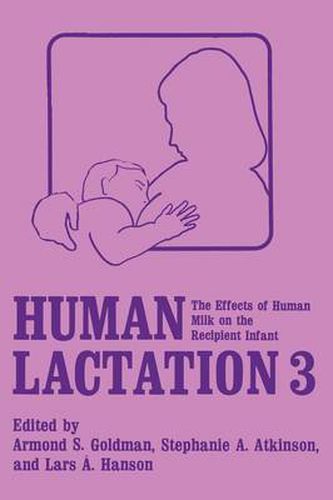Readings Newsletter
Become a Readings Member to make your shopping experience even easier.
Sign in or sign up for free!
You’re not far away from qualifying for FREE standard shipping within Australia
You’ve qualified for FREE standard shipping within Australia
The cart is loading…






This title is printed to order. This book may have been self-published. If so, we cannot guarantee the quality of the content. In the main most books will have gone through the editing process however some may not. We therefore suggest that you be aware of this before ordering this book. If in doubt check either the author or publisher’s details as we are unable to accept any returns unless they are faulty. Please contact us if you have any questions.
Four years ago the National Institutes of Child Health and Human Development (NICHD) brought together a group of scientists to Belmont, Maryland to examine the status of human milk banking. During those deliberations, the idea was generated to organize a series of research conferences concerning human lactation and the composition and biological effects of human milk. The first one, organized by Robert G. Jensen from the University of Connecticut and Margaret C. Neville from the University of Colorado, dealt with methodologic issues. An additional meeting to explore the effects of maternal and environmental factors upon human lactation and the composition of human milk was organized by Margit Hamosh from Georgetown University and me, and was held in January, 1986 in Oaxaca, Mexico. Those meetings provided the foundation for the design of the present conference, ‘The Effects of Human Milk Upon the Recipient Infant’. In addition to a grant from the NICHD, the conference was generously supported by Milupa AG from the Federal Republic of Germany; Wyeth Limited and Mead Johnson of Canada; and Ross Laboratories, Heinz USA, the Mead Johnson Nutritional Group, Wyeth International Limited, Gerber Products Company, the La Leche League International, Glaxo Incorporated and Sandoz Pharmaceutical Corporation from the United States.
$9.00 standard shipping within Australia
FREE standard shipping within Australia for orders over $100.00
Express & International shipping calculated at checkout
This title is printed to order. This book may have been self-published. If so, we cannot guarantee the quality of the content. In the main most books will have gone through the editing process however some may not. We therefore suggest that you be aware of this before ordering this book. If in doubt check either the author or publisher’s details as we are unable to accept any returns unless they are faulty. Please contact us if you have any questions.
Four years ago the National Institutes of Child Health and Human Development (NICHD) brought together a group of scientists to Belmont, Maryland to examine the status of human milk banking. During those deliberations, the idea was generated to organize a series of research conferences concerning human lactation and the composition and biological effects of human milk. The first one, organized by Robert G. Jensen from the University of Connecticut and Margaret C. Neville from the University of Colorado, dealt with methodologic issues. An additional meeting to explore the effects of maternal and environmental factors upon human lactation and the composition of human milk was organized by Margit Hamosh from Georgetown University and me, and was held in January, 1986 in Oaxaca, Mexico. Those meetings provided the foundation for the design of the present conference, ‘The Effects of Human Milk Upon the Recipient Infant’. In addition to a grant from the NICHD, the conference was generously supported by Milupa AG from the Federal Republic of Germany; Wyeth Limited and Mead Johnson of Canada; and Ross Laboratories, Heinz USA, the Mead Johnson Nutritional Group, Wyeth International Limited, Gerber Products Company, the La Leche League International, Glaxo Incorporated and Sandoz Pharmaceutical Corporation from the United States.